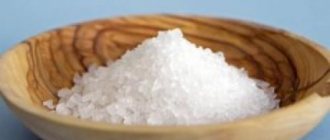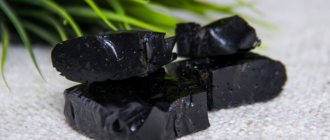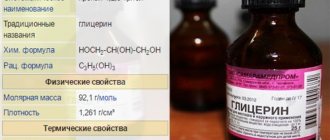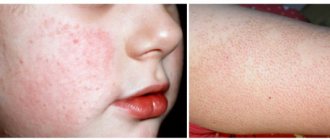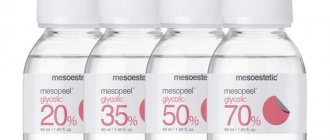Natural beauty is not given to everyone, but with modern technologies, such as peeling and facial cleansing, it is possible to achieve a lot even with minimal external data. Taking care of your face, hair and hands will lead to excellent results, highlight your strengths or remove and disguise visible flaws, and this is necessary, since the appearance of a modern successful woman is one of the main tools she uses, along with her intelligence, business qualities and abilities.
A woman’s face is the first thing people pay attention to when they meet, her calling card, the main criterion for male selection, from which they begin to look at the rest. Therefore, you need to watch your face especially carefully. Bad skin cannot be disguised by any cosmetics. Cosmetic procedures are vital to looking good and achieving success. Among them, one of the first places is occupied by peeling and facial cleansing.
What is the difference between the procedures?
Peeling and facial cleansing have completely different characteristics, indications for procedures, age criteria, methods and methods of manipulation.
The main difference between peeling and cleansing is the use of acid-based solutions. The compositions rid the skin of the upper keratinized layers of the epidermis, which no longer fulfill their “functional duties”, acting as ballast, preventing regeneration and cell renewal, and preventing proper breathing, nutrition and moisturizing of the skin.
Products applied to the surface destroy dead layers. As a result, the skin begins to peel off and completely renew itself. The depth of impact on epidermal tissue depends on the composition chosen by the cosmetologist.
What is the difference between cleansing and peeling? First of all, it is designed to solve specific gaps locally. That is, using this method you can get rid of visible defects (pimples, blackheads, comedones, sebaceous plugs) that are located in the deep layers of the epidermis and require mechanical effort to remove.
To carry out cleaning, the master can use various devices, or perform manual manipulation using special tools.
The difference between the procedures is also in the rehabilitation period:
- After peeling, recovery occurs with the inevitable side effect - peeling. Depending on the depth of impact, rehabilitation time can last from a week to four, sometimes even ten;
- After cleaning, other side effects are possible in the form of bruises and hemorrhages in places where particularly deep inclusions were removed. However, recovery is faster - up to two weeks maximum.
It is also worth paying attention to the fact that sometimes cosmetologists advise combining cleansing and peeling. But this factor is of a purely individual nature. More on such nuances a little later.
About indications for procedures
It should be noted that the procedures in question are not necessary for all people who want to make their facial skin ideal. So, cleaning is a process that should be performed only if the skin is porous and often exposed to oily sheen. Moreover, you need to visit a beauty salon for professional cleaning when blackheads and acne begin to form in the pores. A reduced level of skin tone is also an indication for cleaning.
Speaking about the indications for peeling, it should be noted that they are, first of all, skin unevenness, as well as the presence of visible damage on its surface in the form of scars, peeling of the epidermis, rosacea, and clogged pores. Also an indication for regular peeling is the presence of freckles.
Peeling - the secrets of the procedure
First of all, let's consider the indications for peeling:
- increased skin oiliness;
- hyperpigmentation (including age-related);
- age-related changes;
- wrinkles, deterioration of turgor;
- dull complexion.
Experts say that this procedure can be used for any skin type.
Facial restoration by a cosmetologist using peeling can be done in different ways. Procedures are divided into types, which in turn have subtypes.
Mechanical peeling is the most common and safe. According to another classification, it is classified as surface effects. However, here too the depth of penetration of the composition into the epidermis is somewhat different and depends on the specific subtype of the procedure:
- using simple scrubbing compounds. The effect is reminiscent of a massage. Removes the topmost layer of keratinized cells;
- gommage – based on fruit acids. Dissolves and removes the top layer more efficiently, touching the second layer of the epidermis (it consists of five layers);
- microdermabrasion and coral peeling are rougher, but also more effective. The mechanism of action is based on the dispersal of grains included in the composition of the product by a special apparatus.
It is at the same time as mechanical peeling that cosmetologists may recommend cleaning if the skin is very problematic and requires an integrated approach. But let us remind you once again - everything is purely individual!
Physical peeling (according to another classification - medium) also varies in depth of impact. The second or third layer of the epidermis is affected. During the procedure, liquid nitrogen or dry ice is used. The result is restoration of complexion, improvement of oxygen breathing, stopping the processes of skin dehydration
Chemical, deep, phenol peeling is a way to completely remove all old skin. Almost all layers of the epidermis are affected, which are literally dissolved by the aggressive composition. All that remains is the so-called “growth zone” - a thin layer of cells that creates new skin. This method is very controversial; it is not used without special indications.
The procedure is carried out in a hospital setting using strong painkillers (sometimes even general anesthesia), since the pain is very strong. The rehabilitation period also takes place in a hospital, at least two weeks (sometimes up to four). The entire recovery period requires the implementation of special rules, at first - taking painkillers. Its duration can reach up to ten weeks.
What is the difference?
In order to determine the differences between the two cosmetic procedures, let’s consider the essence of each process:
- Peeling is a session of deep cleansing of the epidermis, during which the upper dead layer of cells is removed. After its removal, the mechanism of enhanced natural restoration of the skin is launched.
- Cleansing is a hygienic procedure during which the skin is cleansed of acne, sebaceous plugs and blackheads. After cleansing, the epidermis begins intensive renewal.
Distinctive features of peeling:
- Experts recommend peeling if the skin has wrinkles, age spots, has lost its elasticity and has become dull.
- Can be used on any skin type.
- The procedure is prescribed for persons over 25 years of age.
Distinctive features of cleaning:
- Relevant for people with sebaceous plugs, blackheads and comedones on the face.
- First of all, it is recommended for those with oily and problematic skin.
- The procedure can be carried out from adolescence, when skin problems appear against the background of hormonal changes in the body.
Types of cleansing performed by a professional cosmetologist
There are several types of professional facial cleansing that can be performed by a cosmetologist:
- Mechanical . The easiest way to cleanse. It involves manually removing unwanted elements from the skin. The cosmetologist can carry out the procedure with his hands or use special cosmetology tools: a Uno spoon, a brush, a Vidal needle, a loop. During the session, damage to the skin is possible.
- Vacuum. For cleaning, a special vacuum device is used, which operates on the principle of a vacuum cleaner.
Before the procedure, the face must be steamed.
The device pulls out dirt and sebaceous plugs from the pores, and also removes dead cells.
- Ultrasonic . It is carried out using a special device - a scrubber. The opening of pores, their cleaning and removal of the upper layer of the epidermis occurs under the influence of ultrasound. Ultrasonic cleaning is painless and takes little time.
- Galvanic . Purification occurs under the influence of electric current from a galvanic device. Under its influence, the pores expand and their contents are destroyed. Before the procedure, a special gel is applied to the face, which conducts current and ensures better glide of the device, and also interacts with the contents of the pores. The procedure is painless and does not damage the skin.
Vacuum, ultrasonic and galvanic cleaning are hardware cleaning methods. During hardware procedures, only the upper layer of the epidermis is affected.
More information about the types of cleaning is described in this video:
Types of peeling procedure
Peeling can be classified according to the methods of exposure:
- Mechanical . It is carried out using abrasive particles that are applied to the skin and remove dead epithelium under pressure. Mechanical peelings include brossage - peeling with brushes, scrub and gommage.
- Chemical . It is performed under the influence of active chemical components and special compounds. For example, phytic acid.
- Acidic . The procedure uses lactic, mandelic or glycolic acids.
- Enzymatic . With the help of plant enzymes, blood flow is stimulated and epidermal cells are renewed. Use enzymes from pomegranate, blueberry or pineapple.
- Physical . Dead cells are burned with dry ice or removed with a laser.
Based on the depth of impact, peeling is divided into three categories:
- Superficial . It affects only the upper layer of the epidermis, where there are no living cells. Fruit acids are used for superficial peeling. It is suitable for young skin.
- Middle . Removal of dead epithelium occurs using a hardware method and special means. After peeling, a recovery procedure follows.
- Deep. Completely removes old skin, without affecting only the growth zone - a thin layer of cells from which epidermal tissue will be restored. It is used for serious age-related changes, the presence of deep wrinkles or scar tissue. The procedure is painful and is performed using anesthesia.
For deep peeling, formulations containing the toxic substance phenol are used, so deep peeling can only be carried out by a highly qualified cosmetologist.
You will learn more information about different types of peeling from this video:
Difference between application methods
The cleaning procedure is divided into several stages:
- Preparatory stage : Cleansing the face of cosmetics.
- Removing the upper stratum corneum using a scrub or gommage.
- Steaming the skin.
- Treatment with a disinfectant solution containing alcohol.
- Applying a mask that will soothe the skin, tighten pores and heal damage.
Chemical peeling procedure:
- Cleansing the face of makeup.
- Degreasing the skin.
- Application of acid solution.
- Neutralization of acid using an alkaline solution.
- Washing your face.
- Treatment with a disinfectant solution.
- Application of a protective agent.
Advantages and disadvantages
Let's look at the pros and cons of each cosmetic procedure. Benefits of peeling :
- Pigmentation is lightened.
- Wrinkles are smoothed out.
- The color and texture of the face is evened out.
- The youthfulness of the skin is prolonged.
Flaws:
- Chemical peeling makes the skin thin and sensitive to UV radiation. Therefore, the procedure is carried out during the period of minimal sun activity: November - March. After a peeling session, it is necessary to use creams that protect against UV radiation.
- The cost is 2 times more expensive than cleaning.
- Medium and deep peels have a long recovery period of up to several weeks.
- After peeling, scarring, increased skin sensitivity, redness and peeling may occur.
Pros of cleaning:
- The skin gets rid of imperfections, blackheads and comedones.
- The oiliness of the skin is reduced and its texture is evened out.
- Improves complexion.
- There is no long-term recovery after hardware cleaning.
- Doesn't take much time.
- Affordable.
Cons of Cleaning:
- Recovery after mechanical cleaning occurs within several days.
- The procedure must be done systematically, especially for people with problem skin.
- Painful sensations are possible, especially during a manual session.
- Redness of the skin after the procedure.
Facial cleansing - what you need to know
By analogy, let’s consider the indications for facial cleansing:
- increased oily skin with enlarged pores;
- comedones (deep and superficial);
- pimples, closed and open;
- millet (millions);
- acne and post-acne;
- hyperpigmentation (including freckles and age spots);
- sebaceous plugs.
A cosmetologist will advise you on which facial cleansing method to use. But in this case, performing a home procedure is safer than peeling. The manipulation is not so aggressive and does not require the use of chemical compounds that can cause an unpredictable reaction.
Cleaning is indicated for those with problematic, oily skin prone to the formation of pimples, blackheads, and sebaceous plugs. But with normal or combined epidermis, sometimes it is also necessary to get rid of the above problems.
Facial cleansing can be carried out both by the hands of a master and using hardware techniques:
- mechanical (manual, manual) - after the preparatory stages, the cosmetologist removes all destructive fragments by hand or with special tools (Unna spoon, Vidal needle, metal loops, brushes);
- Vacuum is carried out using a device that creates negative pressure in a special nozzle. The action is similar to a vacuum cleaner - all the dirt from the pores is sucked out;
- Ultrasonic cleaning is one of the gentle methods with a prolonged effect. Under the influence of ultrasonic vibrations applied to a special scrubber, dirt, sebum, keratinized epithelium and small destructive elements are removed;
- disincrustation (galvanic cleaning) is comparable in effect to manual cleaning. Under the influence of microcurrents, the contents of the pores are broken down and removed;
- laser cleaning – removal of all problem areas using a laser. A good procedure that makes it possible to effectively combat age-related changes.
Another important nuance is that cleansing can be carried out in adolescence, when skin problems arise due to hormonal changes. Whereas peeling is only after 30 years, in rare cases after 25 according to individual indicators.
Contraindications
Deep peeling is an aggressive procedure, so it has many contraindications:
- diseases of the cardiovascular system;
- liver and kidney diseases;
- oncological diseases;
- skin problems (eczema, psoriasis, acne, vitiligo);
- facial injuries;
- pregnancy, breastfeeding;
- menstruation;
- old age.
Anyone who decides to undergo a serious chemical peel will have to deal with unpleasant side effects.
To combine or not to combine - that is the question
Peeling and cleansing, by and large, are procedures designed to solve the same issues. This is their similarity. But the mechanism of action is completely different. We conclude that they may well complement each other, especially when solving significant problems.
The question naturally arises: is it necessary to cleanse the face before peeling? What is better - peeling or cleansing first? Is it possible to exfoliate without cleansing your face and vice versa?
Don't try to solve this dilemma on your own. Leave it to the professionals to decide what to do in each case. Only after diagnosis will they tell you what is best.
Do I need to do peeling and cleansing?
The easiest excuse is everyday activities, household chores, lack of time or funds. In fact, both procedures do not take much time. Facial cleansing or peeling at home also requires money and time, and without special knowledge they often lead to the opposite result.
Healthy facial skin and a well-groomed, successful appearance require you only to consult with a cosmetologist and attend the procedure itself. A cosmetologist will determine the degree of cleansing required and the methods recommended in a particular case, and in the salon they will carry out everything prescribed by the doctor and put in order your business card - your face.
Take care of yourself. Be beautiful at any age. We also recommend that you familiarize yourself with glycolic peeling at home in this material.
Are there any contraindications?
Like every cosmetic procedure, cleansing and peeling have their own direct contraindications.
Facial cleansing should not be carried out in the following cases:
- individual intolerance;
- the presence of dermatological pathologies;
- herpes in acute form;
- hypertonic disease;
- mental disorders;
- dry, sensitive surface of the epidermis;
- critical days, a couple of days before and after - there are hormonal disruptions, the pain sensitivity threshold increases.
For peeling, there are the following prohibitions:
- individual intolerance;
- very sensitive skin.
- dermatological diseases;
- infectious diseases;
- elevated body temperature, regardless of the cause;
- hypertension;
- heart and kidney diseases;
- herpetic infection;
- mental disorders;
- pregnancy and lactation period.
Impacts on the skin should not be carried out during menstruation, a few days before and after it.
A cosmetologist about what is better:
How is peeling done?
Facial cleansing by a cosmetologist
Chemical peeling begins with preparing the skin. It consists of using cosmetics that contain a high content of fruit acids in small concentrations.
Immediately before the procedure, the cosmetologist determines the time that the drug should act on the skin and applies it. Then the composition is removed. The skin is processed and sunscreen compounds are applied to it. The patient is given detailed instructions for home skin care.
Recommendations from cosmetologists
Chemical peeling and facial cleansing are procedures that, to a greater or lesser extent, still injure the epidermis. Cosmetologists advise following simple rules to speed up the recovery process.
After peeling you need:
- do not wet your face for 24 hours (if you used deep chemical peeling – up to 3-4 days);
- Do not remove developing crusts under any circumstances;
- do not visit places with high humidity and air temperature (sana, bathhouse, swimming pool, beach);
- do not sunbathe or visit a solarium;
- do not use products containing alcohol;
- apply moisturizing and nourishing creams according to your skin type;
- Use sunscreen before going outside.
After cleansing your face you should:
- do not wash your face for a day, wipe your face with soothing, cleansing lotions without alcohol;
- Do not forcibly tear off crusts if they form;
- do not expose your face to sunlight for two days;
- sauna, baths, swimming pools, beaches - taboo for at least a week;
- preference should be given to cleansing gels and alcohol-free lotions with a calming effect;
- Apply moisturizing and nourishing products according to your skin type. If necessary, use healing ointments.
The cosmetologist will tell you how often to do the procedure.
Indications
Cosmetologists recommend peeling and facial cleansing in various situations. So, the cleaning procedure can be done for girls with:
- Pimples.
- Comedones.
- Miliums (millet).
- Post-acne.
- Stagnant spots.
- Keratosis.
- Uneven and bumpy skin.
- Sebaceous plugs.
- Excessive oily skin.
Peeling will help cope with:
- Increased fat content.
- Pigment spots.
- Wrinkles.
- Dull skin.
- Photoaging.
- Uneven skin surface.
- Thickened stratum corneum.
- Loss of elasticity.
- Other age-related changes.
Most often, facial cleansing is recommended for girls with oily skin types, as well as those with problem skin. In addition, this procedure is often necessary for teenagers.
Girls with normal and combination skin may also need facial cleansing to get rid of various of the above problems.
As for peeling, it can be used for skin care of various types. This procedure is especially useful for those with aging skin. You can perform peeling from the age of twenty-five.
Reviews
We have already figured out how peeling differs from facial cleansing. Reviews will help you get a complete picture.
Victoria, 25 years old, Moscow
“I cleanse regularly because I have oily, problematic skin. Recently, a cosmetologist advised me to peel my face with fruit acids a week after cleansing. The effect is amazing. This procedure complemented the cleaning, made it better and longer lasting.”
Marina, 32 years old, Ramenskoye
“When I asked what is better to cleanse my face - peeling or ultrasonic cleansing, the master at the salon told me that it was too early for me to think about peeling, since the skin looked quite good. I understand that it is not at all necessary to “burn” your face unless absolutely necessary.”
Oksana, 48 years old, St. Petersburg
“I did peeling with liquid nitrogen. The exfoliation took place for at least two weeks. It’s good that you took a vacation, otherwise at least don’t show up for work. But there is an effect - the face has become fresher, the spots have disappeared"
Tatyana, 40 years old, Ryazan
“Ultrasound facial cleansing is the best procedure for me. I do it regularly and am quite pleased with the result. But a friend went to get a chemical peel and I didn’t see her for a month. She didn't even invite me to visit. Only later did she tell me what a nightmare it was. I definitely won’t do that.”
Olga, 35 years old, Tomsk
“I have been using scrubs with fruit acids on my own for a very long time. As it turned out, this is also peeling, which is not so scary. It’s probably time to contact a cosmetologist for a professional service.”
Is deep peeling safe?
Deep (or chemical) facial peeling was invented more than half a century ago. The procedure is performed in a salon environment and involves treating the skin with a phenol-based preparation (in some cases, salicylic, retinoic and other acids are used). The caustic substance destroys the surface layers of the dermis and reaches the deep layers (0.6 mm). This way the skin is completely renewed.
The chemical peeling procedure is designed for women aged 50 years and older. It is not recommended for younger women, as well as young girls, to do deep peeling, as there are more gentle methods of cleansing facial skin.
In addition to phenol, modern peeling compositions contain completely harmless ingredients: croton oil, glycerin, vitamins. The harmful effects of phenol on the skin are reduced to a minimum. However, do not forget that applying this substance to the skin can cause serious burns. In addition, the percentage of phenol in the solution is very important - any violation of the recipe can lead to unpleasant consequences.
It is worth noting that phenol has a very negative effect on the kidneys. If you do not have problems with this organ, then there is no reason to refuse the procedure. Otherwise, it is better to find another deep skin cleansing procedure. There is no point in taking risks.
Before chemical peeling, consultation with a doctor is required!
The following complications are possible after the procedure:
- kidney and heart problems;
- the appearance of pigmentation;
- allergic reactions;
- appearance of scars (if the procedure was performed incorrectly);
- the appearance of herpes;
- Cleansing with phenol increases the risk of skin cancer.
Summary
Salon procedures designed to make a woman’s appearance more attractive, get rid of defects, and stop aging are excellent methods. But you need to understand the nuances even before going to a cosmetologist.
Whether you can peel after cleansing your face depends on your individual characteristics. We can definitely say that such a procedure is unlikely to be carried out right away. After all, the skin must recover from previous exposure. Remember these nuances.
And most importantly, look for “your own,” experienced, responsible cosmetologist. Only then can you be 100% sure.
Further care
The main task of post-peeling care is to consolidate the effect and avoid complications. Usually it all comes down to following these recommendations:
- use external moisturizers;
- refuse to visit saunas and baths for a week;
- eliminate unfavorable factors (for example, try not to be in direct exposure to sunlight).
Even after the most superficial peeling, the sensitivity of the skin may increase, so it is strongly not recommended to neglect restorative agents. Compositions with natural oils and panthenol are especially good at reducing sensitivity.
Important! After peeling, you should not wash your face or brush your teeth for 12 hours.
Deep cleansing in the salon
Deep peeling in the salon is carried out in two stages: cleansing the skin and applying a phenol composition to it.
Stage 1. Cleansing the skin.
First, the dermis is cleaned with soap and a brush. The task is to wash off the remnants of cosmetics and dead skin cells. Next, the face is wiped with alcohol. This helps to degrease the skin and reduce the work of the sebaceous glands.
Stage 2. Application of phenol.
Phenol is not applied evenly. Some areas of the skin need more dense coverage, while others should not be unnecessarily traumatized.
Next, a special mask – “Zheloleo” – is applied to the face. It consists of a film base and special wax. “Jeloleo” helps phenol spread more actively throughout the skin and penetrate deeper into the layers of the dermis.
After chemical cleansing, it is forbidden to wash your face, brush your teeth, or perform any other hygienic procedures on your face for three days. Water should not come into contact with the skin.
Soon after the procedure, the protective film will slowly begin to peel off, revealing clean, fresh skin underneath. The face will be completely restored in six months.
As for the effect of the salon procedure, it undoubtedly exists. Despite the long recovery, after chemical cleansing with phenol, the new dermis will be clean and fresh, like a baby’s skin. Peeling, of course, will not remove puffiness and wrinkles, but it will significantly reduce their appearance and smooth the skin. The effect can last up to 5-10 years - of course, such a result cannot be achieved at home.
